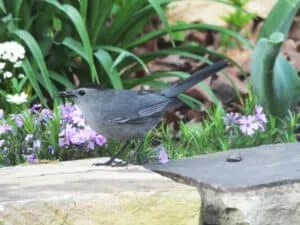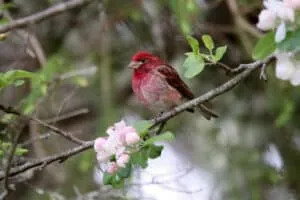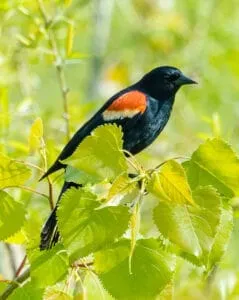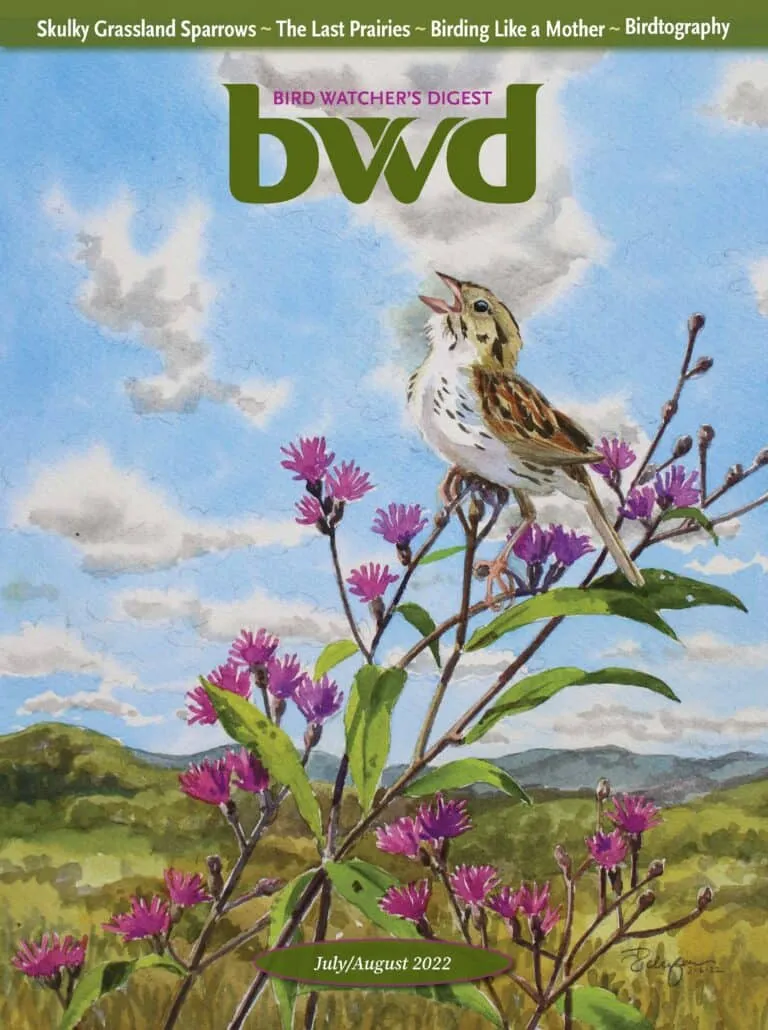As an experienced birder, I frequently get asked about the optimal moments to head out and spot feathered friends. Nancy, a relatively new enthusiast, eagerly posed the question, “What Is The Best Time to go birding?” My initial, almost automatic reply, was simply, “Any time is a good time for birding.” And honestly, that holds true. Birds are always present in our environment, so you don’t necessarily require a specific time slot to enjoy observing them.
However, reflecting more deeply on Nancy’s question, I realized there are indeed certain periods that offer superior opportunities for spotting a greater variety and number of species. These particularly rewarding times can be categorized into four main areas. Understanding these factors can significantly enhance your birding experience, helping you plan excursions when the odds of encountering diverse birdlife are highest. Let’s delve into these elements.
These key factors that influence birding success include: (1) The time or season of the year, particularly concerning migration patterns; (2) The prevailing weather conditions, which dictate bird activity levels; (3) The specific time of day, as birds follow a natural solar rhythm; and surprisingly, (4) Even the day of the week can play a role for the birder, if not the birds themselves. Analyzing these points will help you understand What Is The Best Time to maximize your birding checklist.
Season and Time of Year: When is the Best Time for Migration?
If you reside in a region that experiences harsh winter conditions, you are already well aware of the significant impact the time or season of the year has on birding possibilities. It’s simply not realistic to expect to record as many different species during a December bird count as you might on a pleasant spring day while attempting a Big Day challenge in May. The plain fact is, fewer species remain in mid-winter compared to the vibrant activity seen during spring migration.
Migration is a powerful force that profoundly influences birding activity, presenting both opportunities and challenges. In the autumn months, numerous species depart their northern breeding grounds, heading south to warmer climates before winter arrives. A few species that breed further north might move down to replace them temporarily, but the overall diversity and sheer numbers typically cannot compete with what’s available during the spring migration spectacle.
What to Eat in Fort Worth – A Culinary Deep Dive
Discover the Top Restaurants in Denver – A Culinary Journey
Discover Where to Visit in Las Vegas
Spring brings a fantastic surge in bird numbers. You have the year-round resident birds, who stay in the area throughout the year. Your typical summer residents, who migrated south for the winter, will be returning to breed. Adding to this bounty are the transient species – those that breed in areas much further north of your location but pass through your area during their journey back home.
Spring Migration: What Is The Best Time Bonanza
For example, a Black and White Warbler visited my yard specifically on May 5th for four consecutive years. It would stay for just two days before continuing its northward journey to its breeding range. I would not encounter another one until the same time the following year. This spring window was my sole opportunity to see this particular species all year. This illustrates how spring migration truly represents a bonanza of birds, often making it a strong contender for What Is The Best Time if your goal is maximum species diversity.
 A Gray Catbird perched on a branch, illustrating factors that influence what is the best time for birding.
A Gray Catbird perched on a branch, illustrating factors that influence what is the best time for birding.
Weather Conditions: What Impact Do They Have on the Best Time?
Just like humans, birds generally dislike weather extremes. During the hottest days of the year, and equally so on the coldest ones, bird activity significantly decreases. Their primary focus shifts entirely to survival – finding essential food and water – and they exert minimal energy on other activities. Consequently, most birders also tend to be less active on such days, as it’s simply unrealistic to anticipate great birding opportunities under these conditions.
The same principle applies when the weather turns truly foul – think torrential downpours, hurricane-force winds, sleet, or ice storms. On days experiencing such severe conditions, birds are primarily focused on seeking the best possible shelter from the elements. Understandably, birders are usually doing the same. While the periods immediately before or after a major storm can sometimes yield interesting sightings, trying to bird during truly foul weather is generally unproductive.
 A vibrant Purple Finch, showing how weather conditions impact bird activity for finding the best time to go birding.
A vibrant Purple Finch, showing how weather conditions impact bird activity for finding the best time to go birding.
Time of Day: Discovering What Is The Best Time for Activity
While birds don’t possess watches and aren’t concerned with standard time, their lives are meticulously regulated by the solar clock. They awaken as the sun rises and settle down for rest when it sets. You’ve likely heard of the “dawn chorus” – this refers to the period of a few hours surrounding sunrise when birds are at their most active and vocal, particularly during the spring breeding season. To observe the highest levels of bird activity, you’ll often need to rise early.
Birds are most active in the early morning because they need to replenish the energy they expended during the night. After this initial burst of feeding, they typically take some time to rest.
The period around midday and into the afternoon heat is generally considered the doldrums for birding. During this time, birds tend to be much quieter and less conspicuous. Some experienced nature observers even suggest that the mid-day period is an ideal time to shift your attention to butterflies, as they are often most active when birds are resting.
As the day draws to a close, usually around sunset, birds become active again. They engage in a final bout of foraging, seeking one more meal before they find a place to roost for the evening.
Birders who maintain active bird feeders often notice that their visiting birds seem to follow a consistent schedule, appearing at similar times each day. For instance, the Northern Cardinal is frequently one of the very first birds to arrive at feeders in the morning and the last to visit in the evening before nightfall. This predictable behavior underscores the importance of considering the time of day when determining What Is The Best Time to observe birds in your area.
 A male Red-winged Blackbird displaying its red shoulder patches, highlighting the influence of time of day or even the day of the week on finding the best time for birding.
A male Red-winged Blackbird displaying its red shoulder patches, highlighting the influence of time of day or even the day of the week on finding the best time for birding.
Day of the Week: A Surprising Factor in What Is The Best Time
Birds, of course, do not adhere to a standard 40-hour work week or consult a crowded social calendar for scheduling conflicts. They follow their biological imperatives every single day. So, from a bird’s perspective, the specific day of the week likely makes no difference whatsoever. However, the day can make a difference for the birder, much like grocery stores or shopping malls tend to be significantly busier on weekends. Weekends typically see more people out and about, many of whom are also trying to enjoy nature.
Depending on your personal preference and birding style, this increased human presence on weekends can be perceived as either positive or negative. On the one hand, when there are more birders present, it can be easier for beginners to “tag along” with more experienced individuals, learning from them and asking questions. More pairs of eyes are scanning the environment, increasing the chances of someone spotting interesting birds. You also have the opportunity to share your enthusiasm with fellow nature lovers.
On the other hand, birds generally prefer environments with minimal disturbance. Excessive human activity can cause them to be warier, stay hidden, or move to quieter areas with less presence. From this perspective, you might argue that you are likely to see more birds on a quieter weekday. Yet, I personally enjoy the camaraderie that comes with birding in good company.
Last year, I experienced a day when all four of these categories seemed to align perfectly, resulting in a truly exceptional birding experience. Firstly, the overall season and time of year were favorable; it was mid-September. In my local area, this particular time represents the peak period for observing migrating Broad-winged Hawks as they journey south.
However, there hadn’t been any significant hawk reports for several days leading up to this. A large weather system had stalled just south of our location, and hawks are intelligent enough not to fly directly into a major storm front. Consequently, they had essentially paused their migration, waiting for the weather to improve. The forecast predicted that the storm would clear out overnight. Therefore, the weather conditions for the following day appeared highly favorable for migration.
The time of day was also convenient for my schedule. I decided to sleep in a little and didn’t arrive at the local hawk watch station until 10:00 a.m. the next morning. There was really no benefit to getting there much earlier. The migrating hawks typically wait for the sun to warm the air, which creates the necessary thermal currents they use to gain altitude and glide during their long-distance flight.
Thus, the convergence of these elements – the right season, favorable post-storm weather, and the appropriate time of day for hawk thermals – suggested a promising day for observation. I wasn’t the only one who recognized this potential; other birders also seemed to understand the likelihood of a significant flight. Oh, and since it happened to be a Saturday, numerous other birders showed up to share in the expected spectacle. And it wasn’t just a good day; it was an absolutely great day. The official hawk counters at the station recorded over 10,000 Broad-winged Hawks migrating overhead that day!
That specific day served as an incredible, real-life example of how conditions can align for optimum birding success, highlighting the various factors that contribute to answering the question What Is The Best Time. Despite this extraordinary experience, I still firmly stand by my original, simple response: “Any time is a good time for birding.”
 Cover of BWD Magazine featuring a bird image, representing resources for learning more about finding what is the best time and places for birding.
Cover of BWD Magazine featuring a bird image, representing resources for learning more about finding what is the best time and places for birding.
Frequently Asked Questions About What Is The Best Time for Birding
Is there one single, definitive answer to What Is The Best Time for birding?
No, there isn’t one single best time that applies universally. The “best” time depends heavily on various factors including your location, the time of year (especially migration), the specific birds you hope to see, and the daily conditions like weather and time of day.
Why is spring migration often considered the best time for birding?
Spring migration typically offers the highest diversity and volume of birds because you have resident species, returning summer residents, and numerous transient species passing through on their way to northern breeding grounds. This concentration of birds provides excellent viewing opportunities.
How does weather influence finding What Is The Best Time to go birding?
Extreme weather conditions, whether very hot, very cold, or severe like heavy rain or wind, generally reduce bird activity. Birds are more focused on seeking shelter and conserving energy. Birding is usually more productive before or after such conditions pass, or during mild weather.
What time of day is usually best for birding?
The early morning, particularly around sunrise, is often considered the most active time for birds, known as the “dawn chorus.” Birds are busy feeding and singing. There can also be a surge of activity in the late afternoon/early evening as birds forage before roosting. Midday is typically less active.
Does the day of the week truly matter for birding success?
While the day of the week doesn’t affect the birds’ behavior, it can affect the birders’ experience. Weekends are often busier at popular birding spots, meaning more people but potentially more disturbance for birds. Weekdays might offer quieter conditions for birding.
